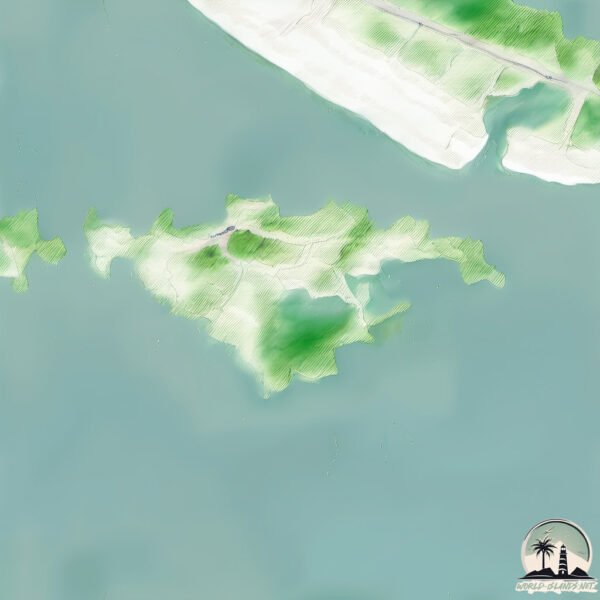Welcome to Dayang Shan , a Temperate island in the Eastern China Sea, part of the majestic Pacific Ocean. This guide offers a comprehensive overview of what makes Dayang Shan unique – from its geography and climate to its population, infrastructure, and beyond. Dive into the details:
Geography and size of Dayang Shan
Size: 5.09 km²Coastline: 13.9 kmOcean: Pacific OceanSea: Eastern China SeaContinent: Asia
Dayang Shan is a Small Island spanning 5.1 km² with a coastline of 13.9 km.
Archipel: –
Tectonic Plate: Yangtze – A minor tectonic plate in East Asia, often considered a part of the Eurasian Plate. It’s primarily continental and covers the Yangtze River area in China, playing a significant role in the region’s geological stability.
The geographic heart of the island is pinpointed at these coordinates:
Climate and weather of Dayang Shan
Climate Zone: TemperateClimate Details: Humid Subtropical ClimateTemperature: Hot Summer
Climate Characteristics: With continuous rainfall and hot summers, this climate is common in some coastal regions, supporting diverse vegetation.
Topography and nature of Dayang Shan
Timezone: UTC+08:00Timezone places: Australia/PerthMax. Elevation: 74 m Mean Elevation: 25 mVegetation: Sparse VegetationTree Coverage: 93%
The mean elevation is 25 m. The highest elevation on the island reaches approximately 74 meters above sea level. The island is characterized by Plains: Flat, low-lying lands characterized by a maximum elevation of up to 200 meters. On islands, plains are typically coastal lowlands or central flat areas.
Dominating Vegetation: Sparse Vegetation
Vegetation: 7 vegetation zones – Very Highly Diverse Island
Infrastructure and Travelling to Dayang Shan
Does the island have a public airport? no .
Does the island have a major port? no .
The mean population of Dayang Shan is 771 per km². Dayang Shan is Densely Populated. The island belongs to China .
Continuing your journey, Jiangjunmao is the next notable island, situated merely km away.
海岛行系列之嵊泗大洋山 Da Yang Shan 1080P HD
大洋山为浙江省崎岖列岛的主岛,是嵊泗县洋山镇政府驻地,与小洋山隔海相望。大洋山为嵊泗列岛国家级风景名胜区的一部分, ...
海岛行系列之嵊泗大洋山 Da Yang Shan 1080P HD
大洋山为浙江省崎岖列岛的主岛,是嵊泗县洋山镇政府驻地,与小洋山隔海相望。大洋山为嵊泗列岛国家级风景名胜区的一部分, ...
大洋山为浙江省崎岖列岛的主岛,是嵊泗县洋山镇政府驻地,与小洋山隔海相望。大洋山为嵊泗列岛国家级风景名胜区的一部分, ...
嵊泗大洋山 Da Yang Shan
大洋山为浙江省崎岖列岛的主岛,是嵊泗县洋山镇政府驻地,与小洋山隔海相望。大洋山为嵊泗列岛国家级风景名胜区的一部分, ...
大洋山为浙江省崎岖列岛的主岛,是嵊泗县洋山镇政府驻地,与小洋山隔海相望。大洋山为嵊泗列岛国家级风景名胜区的一部分, ...
大洋山岛防空洞探险Ocean bomb shelters in the island adventure
China is classified as Emerging region: BRIC: Brazil, Russia, India, and China – Economies noted for their rapid growth and increasing influence on global affairs. The level of income is Upper middle income.
News – Latest Updates and Headlines from Dayang Shan
Stay informed with the most recent news and important headlines from Dayang Shan. Here’s a roundup of the latest developments.
Loading...
Please note: The data used here has been primarily extracted from satellite readings. Deviations from exact values may occur, particularly regarding the height of elevations and population density. Land area and coastline measurements refer to average values at mean high tide.

